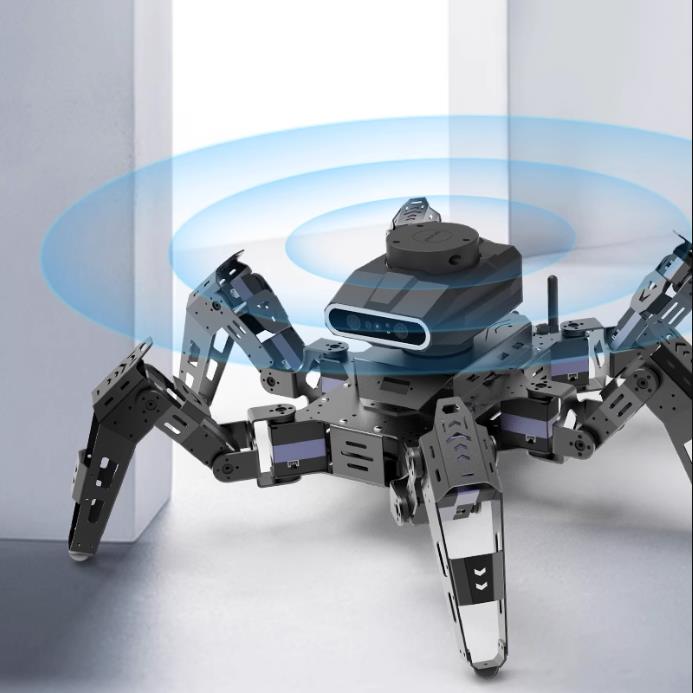The Jetson Nano ROS LiDAR hexapod robot of XiaoR Technology has excellent performance. The following is a detailed analysis of its performance:
Main control system:
The Jetson Nano B01 is used as the main control, integrating a 128-core Maxwell architecture GPU and a quad-core ARM Cortex-A57 MPCore processor, providing the robot with powerful computing power.
Equipped with 4GB 64-bit LPDDR4 memory, it ensures the smoothness and efficiency of data processing.
LiDAR and navigation:
Equipped with advanced LiDAR, such as Silan A1 laser scanning radar, it provides a high-speed scanning frequency of 8,000 times per second, and 360° rotation ranging in forward and reverse directions to ensure the accuracy of measurement data.
Combined with ROS (Robot Operating System) algorithms, such as gmapping, karto, Hector, etc., the robot can perform autonomous navigation, fixed-point navigation, multi-point navigation, path planning and dynamic obstacle avoidance in complex environments.
Depth camera and 3D mapping:
Using the Orbbec 3D depth camera, it can not only support the reading of RGB, point cloud images and depth data information, but also support the development of more deep visual functions such as Rtabmap 3D mapping.
The radar's laser scanning mapping and measurement combined with the depth camera take the robot's mapping and navigation level to a higher level, meeting the robot's positioning, mapping, navigation and autonomous path planning learning needs.
Hexapod structure and terrain passability:
The XiaoR ROS hexapod robot body is made of aluminum alloy, which is light and strong, and is equipped with 19 high-performance serial bus servos, connecting the three joints of each leg elbow, shoulder and hip. The design enables the robot to have all-terrain passability and can reach places that other robots cannot reach, such as step climbing and narrow gap crossing.
XiaoR Technology's advantages in the field of bionic robot control ensure the stability and reliability of the robot during the movement process, which can be very close to the movement posture of real hexapod creatures.
Human-computer interaction:
The depth camera performs well in object recognition and human feature recognition. Using the cascadeClassifier algorithm, faces within the field of view can be quickly recognized; through OpenCV, gestures can be keenly recognized and corresponding actions can be performed; it supports dynamic monitoring and tracking of QR code AR tags, and can obtain the posture and coordinates of QR code tags; through graphics processing and analysis, the bionic hexapod robot can also recognize action instructions and make corresponding actions; it supports multiple color recognition, KCF target tracking and edge detection, and outputs the effect map after detection in real time.
Group control formation:
Multiple bionic robots can be formed into different formations to achieve simultaneous control of the servo formation.
Inverse kinematics algorithm:
The inverse kinematics algorithm optimized by XiaoR Technology enables the robot to maintain a constant height and speed during the mapping process, thereby obtaining a more accurate and reliable mapping model.
Software and algorithm support:
ROS (Robot Operating System) provides robots with rich functions and tools for developing, controlling and running various types of robot systems.
In summary, the Jetson Nano ROS LiDAR hexapod robot from Little R Technology has demonstrated outstanding performance with its powerful main control system, precise LiDAR and depth camera, excellent hexapod structure and terrain passing ability, advanced human-computer interaction and inverse kinematics algorithms, and powerful software and algorithm support. These features make the robot have extensive potential and application value in navigation, interaction and intelligent applications.

